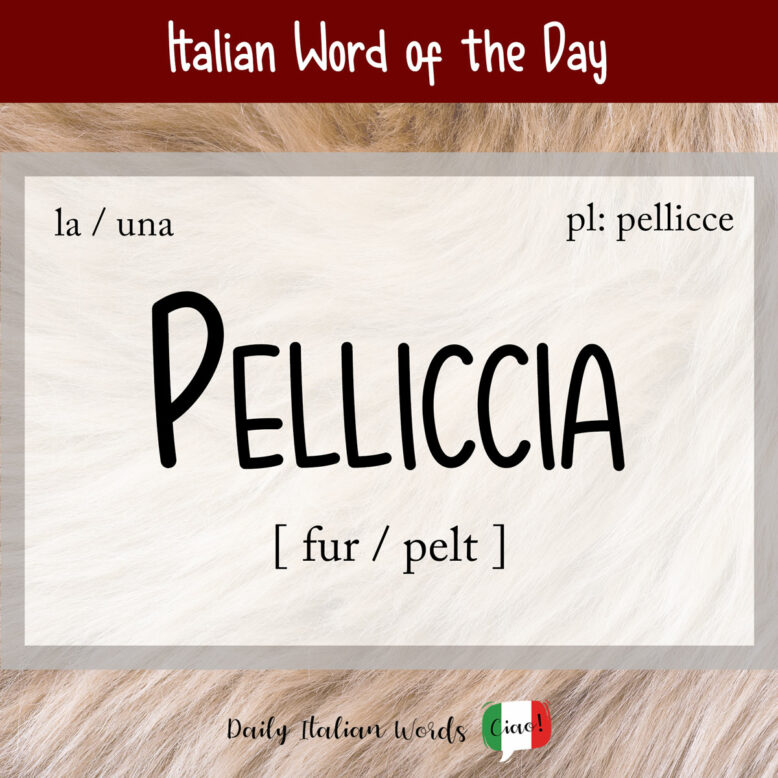The Italian word for the fur or pelt of an animal is pelliccia. It derives from the late Latin pellicius (“of skin”), which in turn is a derivative of pellis (skin).
pelliccia
fur

Pelliccia is a feminine noun, so it takes the following definite and indefinite articles:
- la pelliccia = the fur
- le pellicce = the furs
- una pelliccia = a fur
- delle pellicce = (some) furs
Similar to the English word, pelliccia can refer to both the fur of a living animal, or the fur-covered skin that is used to make clothing.
In inverno, la pelliccia del gatto è più folta per proteggerlo dal freddo.
In the winter, the cat’s fur is thicker to protect it from the cold.
Nella preistoria, le pellicce erano necessarie all’uomo per coprirsi e resistere al freddo.
In prehistoric times, furs were necessary for man to cover himself and withstand the cold.
By extension, pelliccia can also be used to refer to a fur coat.
Minks (visoni), raccoon dogs (cani-procioni) and foxes (volpi) are amongst the most bred, and the most exploited species, for fur production in the world. Thankfully, there are organisations across the world such as LAV (Lega Anti Vivisezione) in Italy that continue to fight for higher animal welfare standards and protection against animal cruelty.
Those who like the look of real fur, but do not wish to wear it, may choose to buy una pelliccia sintetica (faux fur). With the advancement in technology today, it is almost impossible to distinguish between faux fur and real animal fur.

Heather Broster is a graduate with honours in linguistics from the University of Western Ontario. She is an aspiring polyglot, proficient in English and Italian, as well as Japanese, Welsh, and French to varying degrees of fluency. Originally from Toronto, Heather has resided in various countries, notably Italy for a period of six years. Her primary focus lies in the fields of language acquisition, education, and bilingual instruction.


